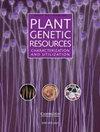濒危植物茶花EST-SSR标记的开发
IF 0.7
4区 生物学
Q3 PLANT SCIENCES
Plant Genetic Resources: Characterization and Utilization
Pub Date : 2023-03-16
DOI:10.1017/s1479262123000138
引用次数: 0
摘要
山茶属山茶科植物,具有很高的观赏和药用价值,是山茶作物遗传改良的稀有基因资源,但由于其独特且野生种群极少,目前面临灭绝的威胁。分子标记技术已经阐明了野生植物物种的遗传多样性结构、新的基因资源以及与作物的关系。这将有利于这些珍贵的作物相关野生物种的保护和作物改良。本研究从155,011个转录组单基因中鉴定出95,979个微卫星位点,并开发出14个多态表达序列标签衍生的简单序列重复(EST-SSR)微卫星标记。每个位点的等位基因数(Na)为2 ~ 8个,平均为4.86个。利用这些多态性标记对4个天然居群40个个体的遗传多样性进行了分析。EST-SSR等位基因数(Na)在2 ~ 5之间,期望杂合度(He)在0.183 ~ 0.683之间,观察杂合度(Ho)在0.201 ~ 0.700之间,表明野生麻花居群存在丰富的遗传变异。此外,利用本研究开发的14个EST-SSR标记对4个居群进行系统发育分析,将40个个体划分为与地理分布一致的3个类群。结果表明,有14个EST-SSR标记可用于分析茶花居群遗传变异和种间杂交改良茶花新品种,有利于该濒危物种的保护。本文章由计算机程序翻译,如有差异,请以英文原文为准。
Development of EST-SSR markers for an endangered plant species, Camellia fascicularis (Theaceae)
The plant Camellia fascicularis, belonging to family Theaceae, has high ornamental and medicinal value, and rare gene resources for genetic improvement of Camellia crops, but is currently threatened with extinction because of the unique and extremely small wild populations. Molecular markers have clarified the wild plant species’ genetic diversity structure, new gene resources and relationship with crops. This will be beneficial for conservation of these valuable crop-related wild species and crop improvement. In this study, we identified 95,979 microsatellite loci from 155,011 transcriptome unigenes, and developed 14 polymorphic expressed sequence tag-derived simple sequence repeat (EST-SSR) microsatellite markers for C. fascicularis. The number of alleles (Na) per locus was 2–8 with a mean of 4.86. The genetic diversity of 40 individuals from four natural populations of C. fascicularis was analysed using these polymorphic markers. The number of alleles (Na) for EST-SSR ranged from 2 to 5, with the expected heterozygosities (He) and observed heterozygosities (Ho) in all loci ranging from 0.183 to 0.683, and from 0.201 to 0.700, respectively, implying a rich genetic variation present in wild C. fascicularis populations. Moreover, the phylogenetic analysis among four populations, using the 14 EST-SSR markers developed in this study, grouped 40 individuals into three groups, which coincide with their geographic distribution. These results showed that 14 EST-SSR markers are available for the analysis of genetic variation in C. fascicularis populations and genetic improvement of new Camellias cultivars by interspecific hybridization, and are beneficial for conservation of the endangered species.
求助全文
通过发布文献求助,成功后即可免费获取论文全文。
去求助
来源期刊

Plant Genetic Resources: Characterization and Utilization
Agricultural and Biological Sciences-Agronomy and Crop Science
CiteScore
2.80
自引率
0.00%
发文量
29
审稿时长
>12 weeks
期刊介绍:
Plant Genetic Resources is an international journal which provides a forum for describing the application of novel genomic technologies, as well as their integration with established techniques, towards the understanding of the genetic variation captured in both in situ and ex situ collections of crop and non-crop plants; and for the airing of wider issues relevant to plant germplasm conservation and utilisation. We particularly welcome multi-disciplinary approaches that incorporate both a technical and a socio-economic focus. Technical aspects can cover developments in technologies of potential or demonstrated relevance to the analysis of variation and diversity at the phenotypic and genotypic levels.
 求助内容:
求助内容: 应助结果提醒方式:
应助结果提醒方式:


